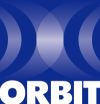| 1 | | = Open-Access Research Testbed for Next-Generation Wireless Networks (ORBIT) = |
| 2 | | |
| 3 | | |
| 4 | | |
| 5 | | [[NewsFlashStart]] |
| 6 | | {{{ |
| 7 | | #!html |
| 8 | | <h1 style="text-align: center">Orbit News</h1> |
| 9 | | }}} |
| 10 | | [[BlogList(num_posts=4,hidecal=true,mark_updated=false)]] |
| 11 | | {{{ |
| 12 | | #!html |
| 13 | | <hr></hr> |
| 14 | | <h1 style="text-align: center">Visitor Map</h1> |
| 15 | | <div align=center> |
| 16 | | <a href="https://clustrmaps.com/counter/maps.php?url=http://www.orbit-lab.org" id="clustrMapsLink"> |
| 17 | | <img src="https://clustrmaps.com/counter/index2.php?url=http://www.orbit-lab.org" |
| 18 | | alt="Locations of visitors to this page" |
| 19 | | onError="this.onError=null; |
| 20 | | |
| 21 | | this.src='http://www.meetomatic.com/images/clustrmaps-back-soon.jpg'; |
| 22 | | document.getElementById('clustrMapsLink').href='https://clustrmaps.com/'"> |
| 23 | | </img> |
| 24 | | </a> |
| 25 | | </div> |
| 26 | | }}} |
| 27 | | |
| 28 | | [[NewsFlashEnd]] |
| 29 | | |
| 30 | | [[Image(WikiStart:orbit-overview.jpg, 450 )]] |
| 31 | | |
| 32 | | Welcome to the ORBIT (Open-Access Research Testbed for Next-Generation |
| 33 | | Wireless Networks) Testbed Portal. |
| 34 | | |
| 35 | | ORBIT is a two-tier wireless network emulator/field trial designed to |
| 36 | | achieve reproducible experimentation, while also supporting realistic |
| 37 | | evaluation of protocols and applications. The RADIO GRID TESTBED which is |
| 38 | | central to the ORBIT facility uses a novel approach based on a 20x20 |
| 39 | | two-dimensional grid of programmable radio nodes which can be interconnected |
| 40 | | into specified topologies with reproducible wireless channel models. Once |
| 41 | | the basic protocol or application concepts have been validated on the radio |
| 42 | | grid emulator, users can migrate their experiments to the OUTDOOR ORBIT |
| 43 | | network which provides a configurable mix of both high-speed cellular |
| 44 | | (WiMAX, LTE) and 802.11 wireless access in a real-world setting. The ORBIT |
| 45 | | testbed also includes a number of SANDBOX networks used for debugging and |
| 46 | | controlled experimentation on specific aspects. |
| 47 | | |
| 48 | | ORBIT was first funded in 2003 under the Network Research Testbeds (NRT) |
| 49 | | program (CNS-0335244) and subsequently under a follow-on grants CNS-0725053, CNS-0958483 and CNS-1513110. The ORBIT radio grid was first released to research users |
| 50 | | in Oct 2005, and since then has become a widely used community resource for |
| 51 | | evaluation of emerging wireless network architectures and protocols. As of |
| 52 | | 2014, there are over 1000 registered ORBIT users who have conducted a total |
| 53 | | of over ~200,000 experiment-hours on the radio grid testbed to date, with |
| 54 | | 55,701 experiment-hours served during 2013. The ORBIT testbed is also being |
| 55 | | used to support wireless aspects of the [http://www.geni.net GENI], and the ORBIT Management Framework (OMF) |
| 56 | | is being used as one of the core control frameworks in GENI. Examples of specific |
| 57 | | experiments that have been run on the ORBIT testbed include multi-radio |
| 58 | | spectrum coordination, cognitive radio networks, dense !WiFi networks, |
| 59 | | cellular/WiFi multi-homing, vehicular and ad hoc network routing, |
| 60 | | storage-aware/delay tolerant networks, mobile content delivery, |
| 61 | | location-aware protocols, inter-layer wireless security, future Internet |
| 62 | | architecture, and mobile cloud computing. |
| 63 | | |
| 64 | | ORBIT is available for remote or on-site access by academic researchers both |
| 65 | | in the U.S. and internationally (prospective users should first send in an |
| 66 | | account signup request using the [http://www.orbit-lab.org/userManagement/register registration form]). |
| 67 | | Users will have access to the following resources: |
| 68 | | * Range of radio resources including: !WiFi 802.11a/b/g 802.11n 802.11ac, Bluetooth (BLE), !ZigBee, Software Defined Radio (SDR) platforms (USRP, WARP, RTL-SDR, USRP N210, USRP X310, USRP B210, Nutaq PicoSDR2x2-E and Nutaq ZeptoSDR ) |
| 69 | | * Software defined networking (SDN) resources: NEC and Pronto switches, NetFPGA and NetFPGA-10G platforms |
| 70 | | * LTE and WiMAX basestations and clients |
| 71 | | * Cloud resources (including a number of nodes with Tesla-based GPUs) |
| 72 | | |
| 73 | | (Note that use of OUTDOOR nodes is by arrangement and generally requires physical presence of experimenters on the |
| 74 | | Rutgers campus). |
| 75 | | |
| 76 | | For the basics of starting an experiment with the testbed refer to the |
| 77 | | [wiki:Documentation/CGettingStarted#Howtogetstarted "Getting Started" document] and further details information on how to use the |
| 78 | | ORBIT testbed can be found in the [wiki:Documentation documentation section]. Number of [wiki:Tutorials tutorials] is also available as a starting point for experimentation. Additional |
| 79 | | information on both the [wiki:Hardware hardware] and [wiki:Software software] in ORBIT can also be found on |
| 80 | | this site. |
